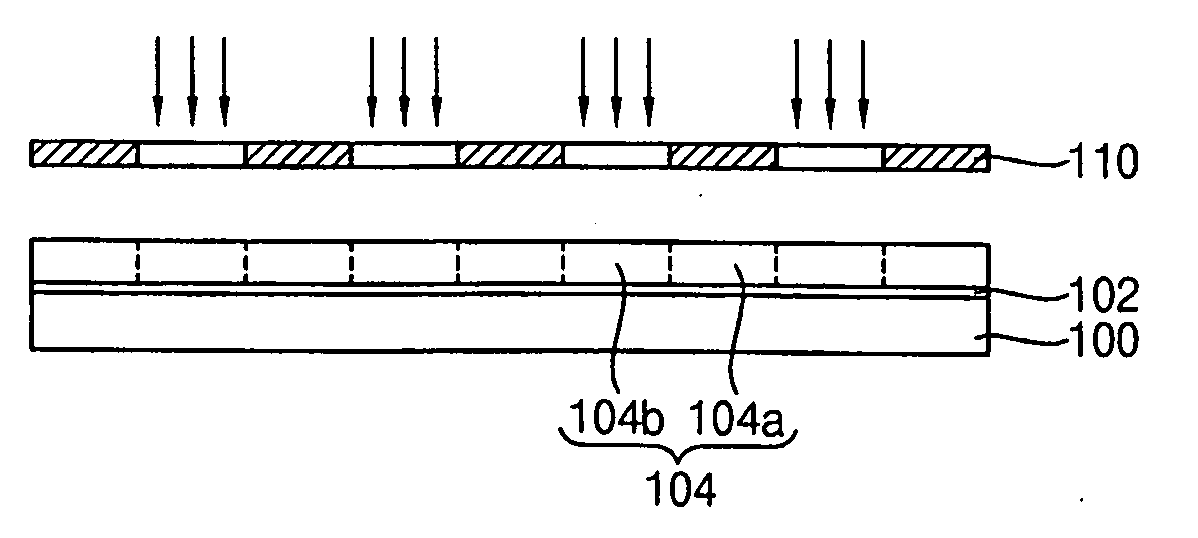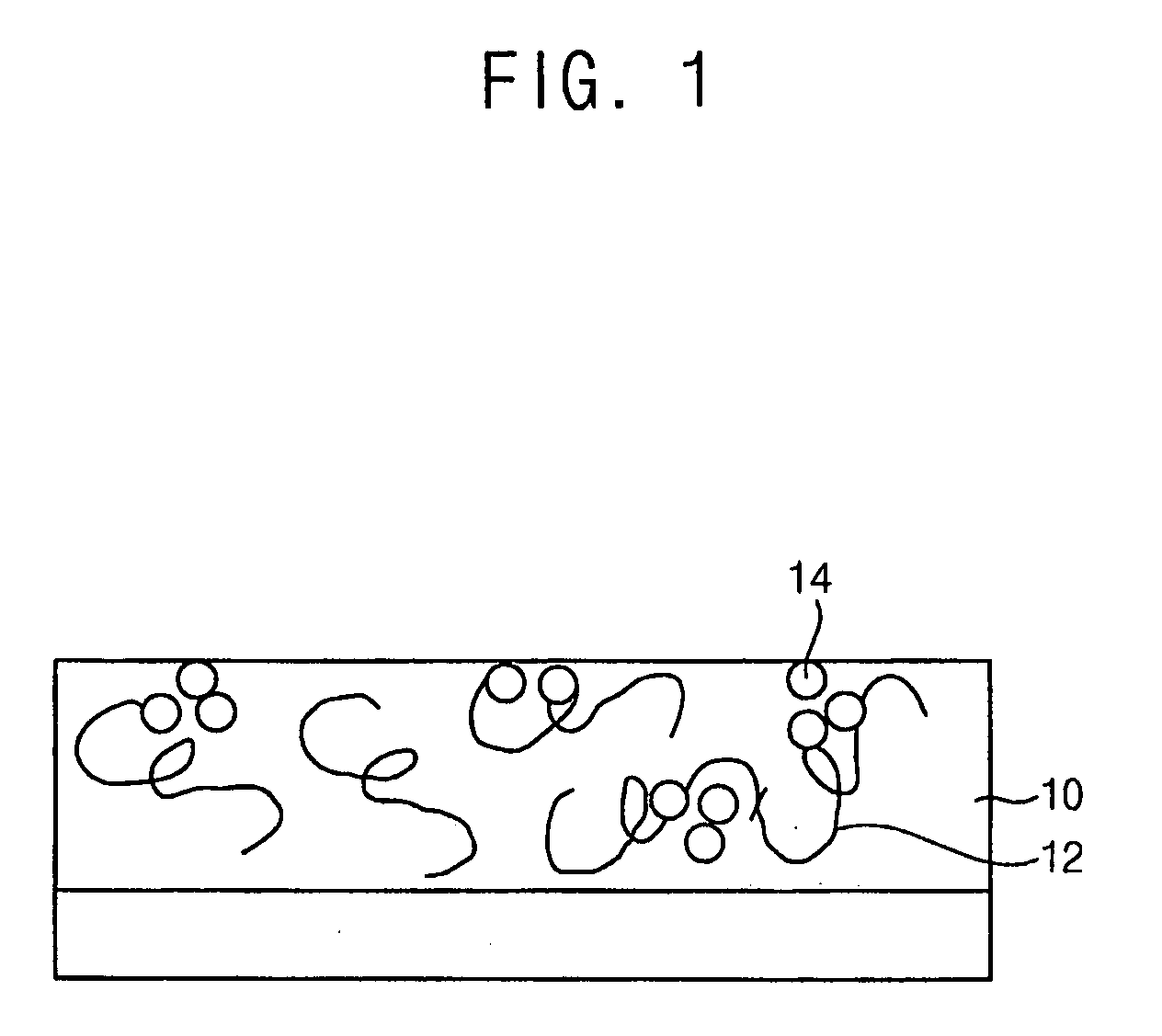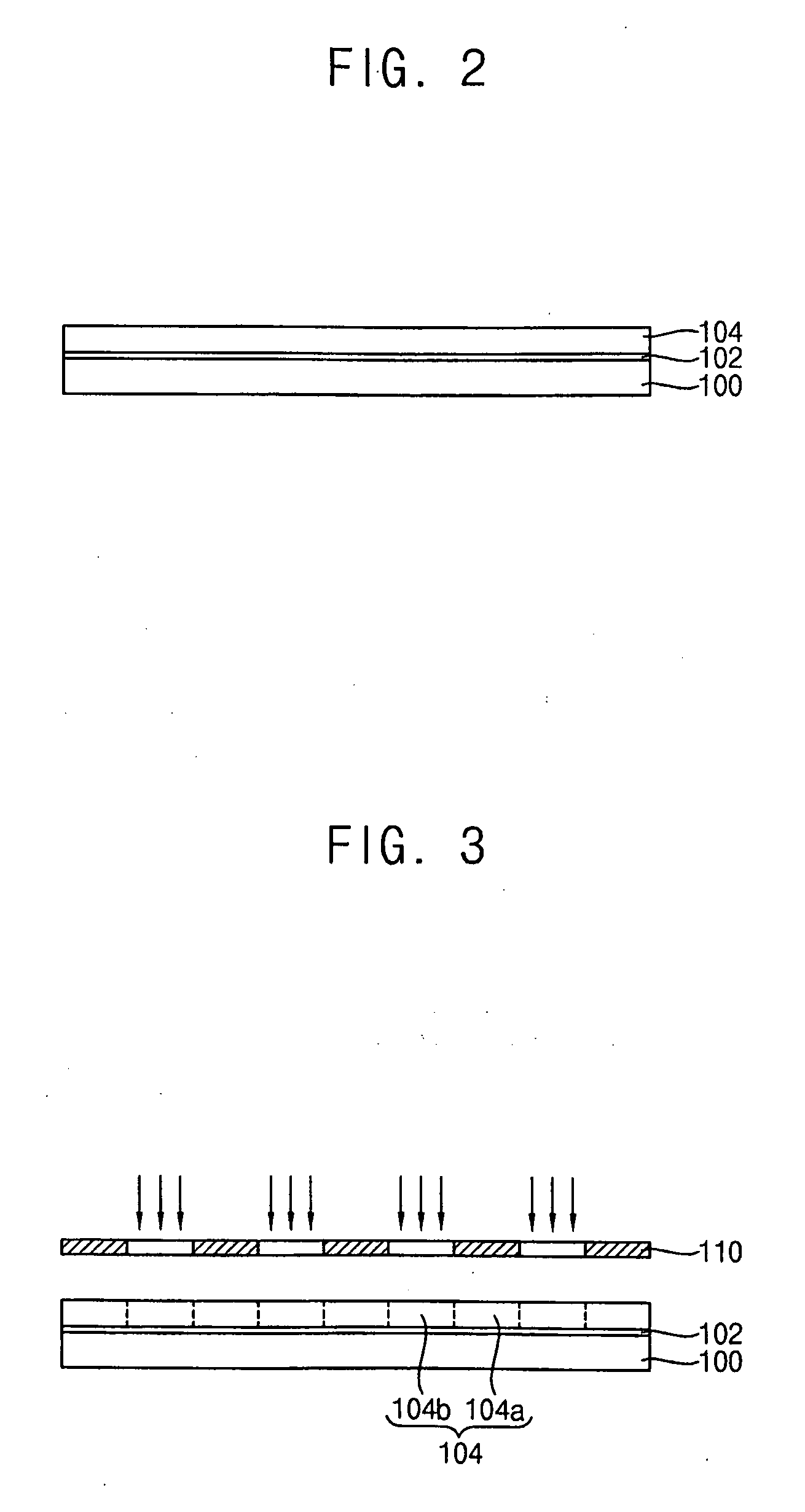Photoacid generators, photoresist composition including the same and method of forming pattern using the same
a generator and photoresist technology, applied in the field of photoacid generators, can solve the problems of substantial difference between actual critical dimensions, damage to photoresist patterns, and insufficient manufacturing margins of iso-dense patterns, and achieve uniform profile, improve critical line width margins, and facilitate mixing
- Summary
- Abstract
- Description
- Claims
- Application Information
AI Technical Summary
Benefits of technology
Problems solved by technology
Method used
Image
Examples
synthetic example 1
[0087]4-bromo-4,4-difluorobutanol was reacted with adamantane carbonyl chloride in a molar ratio of about 1:1. The reaction was carried out in ethyl ether at about 0° C. under a nitrogen atmosphere. The reaction mixture was allowed to warm to a room temperature, and then stirred for about 6 hours. The obtained product was sulfonated using sulfuric acid to prepare a first sulfonic acid represented by the following Chemical Formula A. In Chemical Formula A, n represents 1.
synthetic example 2
[0088]4-bromo-4,4-difluorobutanol was reacted with 4,7,7-trimethyl-3-oxo-2-oxa-bicyclo[2.2.1]heptane-1-carbonyl chloride in a molar ratio of about 1:1. The reaction conditions were substantially the same as those of Synthetic Example 1. The obtained product was sulfonated using sulfuric acid to prepare a second sulfonic acid represented by the following Chemical Formula B. In Chemical Formula B, n represents 1.
example 1
[0089]The first sulfonic acid of Synthetic Example 1 was reacted with a first monophenyl sulfonium chloride to prepare a photoacid generator represented by the following Chemical Formula 1-1. In Chemical Formula 1-1, n represents 1. Particularly, naphthalenylcarbonylethyl tetramethylenesulfonium chloride was reacted with the first sulfonic acid represented by Chemical Formula A in a molar ratio of about 1:1. The reaction was carried out in ethyl ether at about 0° C. under a nitrogen atmosphere. The reaction mixture was allowed to warm to a room temperature, and then stirred for about 6 hours.
[0090]The chemical structure of the photoacid generator was confirmed using a 1H-NMR (Nuclear Magnetic Resonance), a mass spectroscopy and an infrared (IR) spectroscopy. The 1H-NMR spectrum showed chemical shifts at 8.29 ppm (C—H in naphthalene ring), 7.74 ppm (C—H in naphthalene ring), 4.07 ppm (CH2CH2CH2O), 2.56 ppm (COCH2S), 2.30 ppm (SCH2CH2CH2CH2), 2.17 ppm (CF2CH2CH2CH2OCO), 1.6 ppm (CH2CH...
PUM
| Property | Measurement | Unit |
|---|---|---|
| width | aaaaa | aaaaa |
| width | aaaaa | aaaaa |
| temperature | aaaaa | aaaaa |
Abstract
Description
Claims
Application Information
 Login to View More
Login to View More - R&D
- Intellectual Property
- Life Sciences
- Materials
- Tech Scout
- Unparalleled Data Quality
- Higher Quality Content
- 60% Fewer Hallucinations
Browse by: Latest US Patents, China's latest patents, Technical Efficacy Thesaurus, Application Domain, Technology Topic, Popular Technical Reports.
© 2025 PatSnap. All rights reserved.Legal|Privacy policy|Modern Slavery Act Transparency Statement|Sitemap|About US| Contact US: help@patsnap.com



